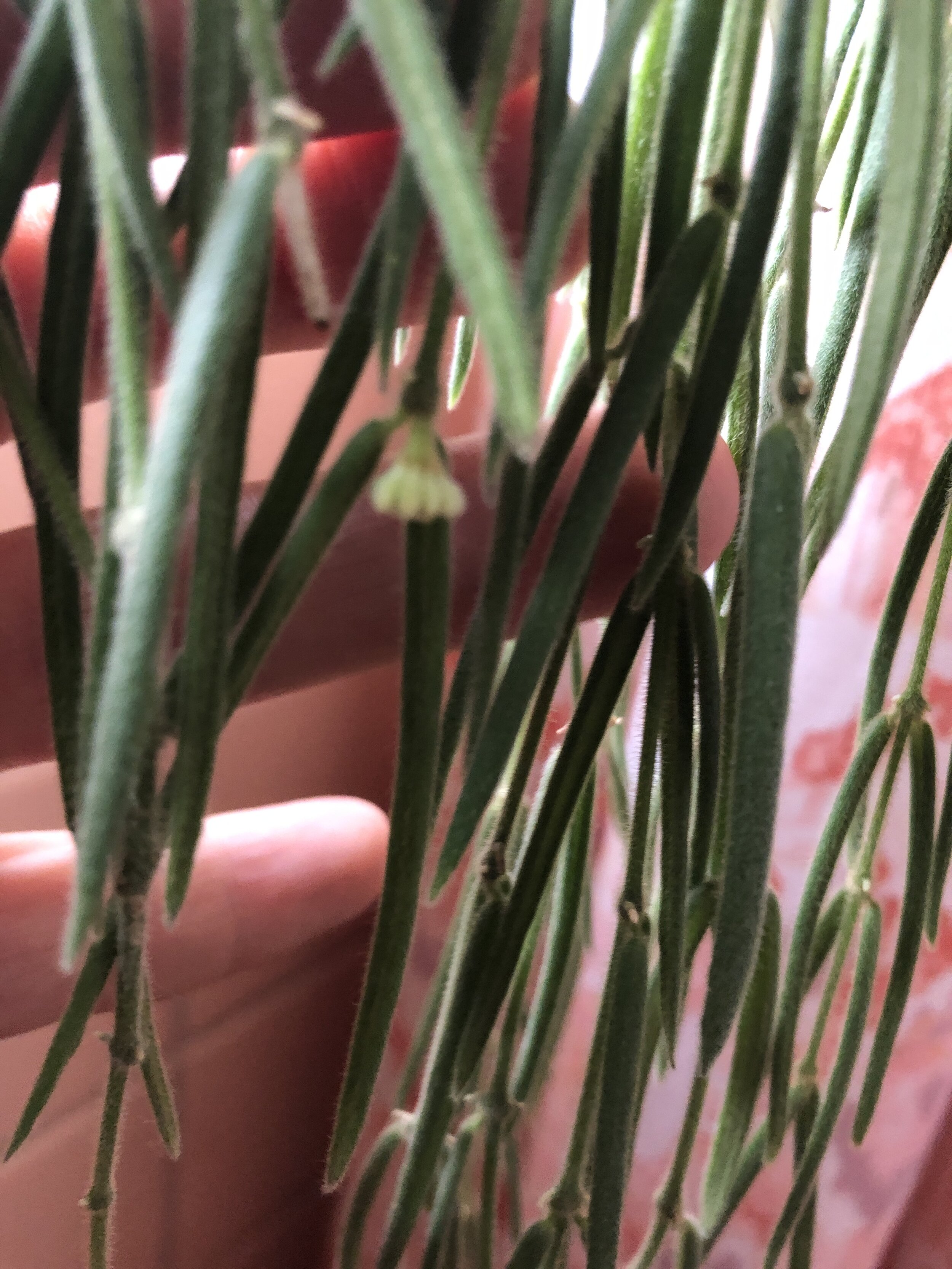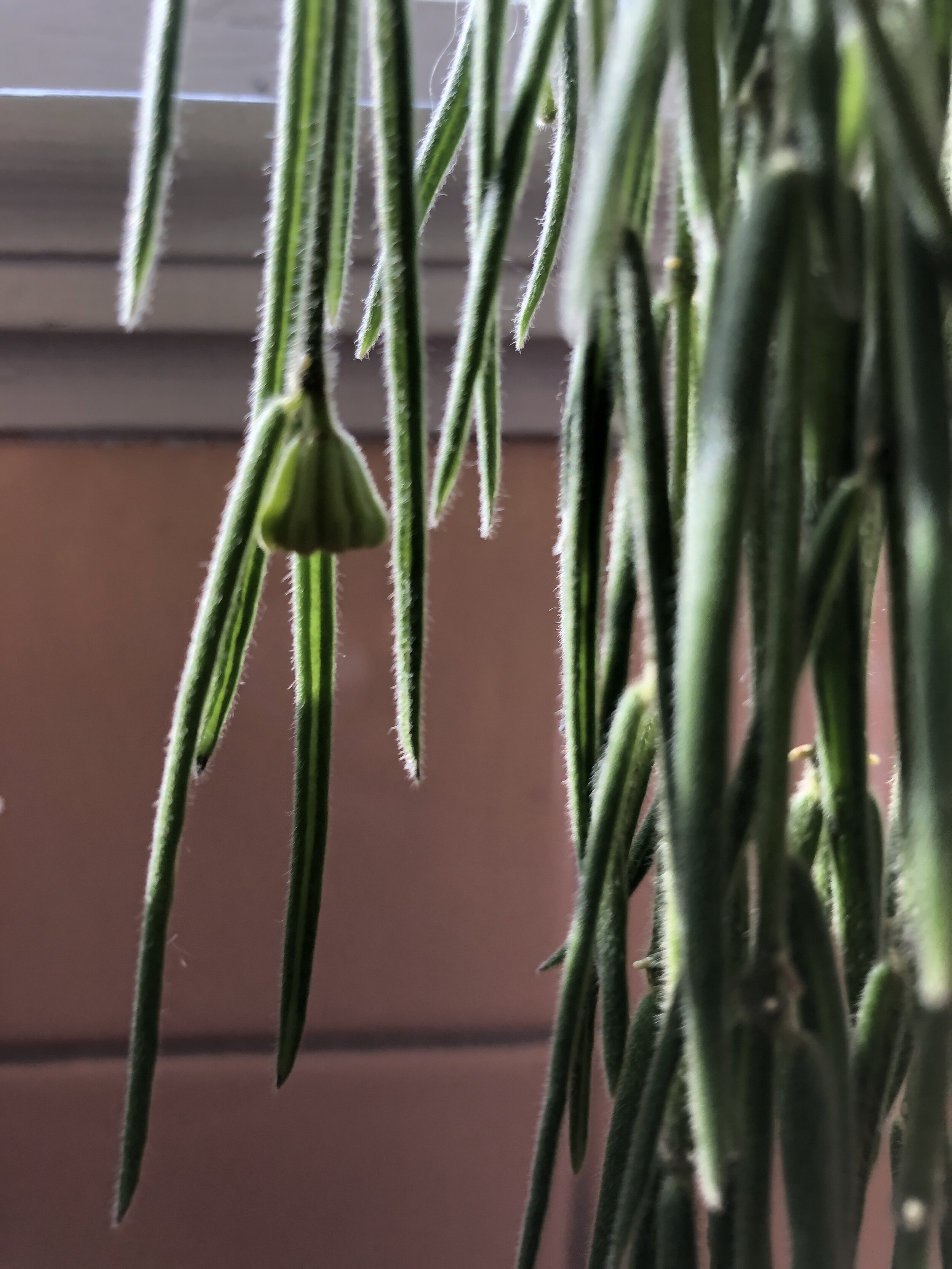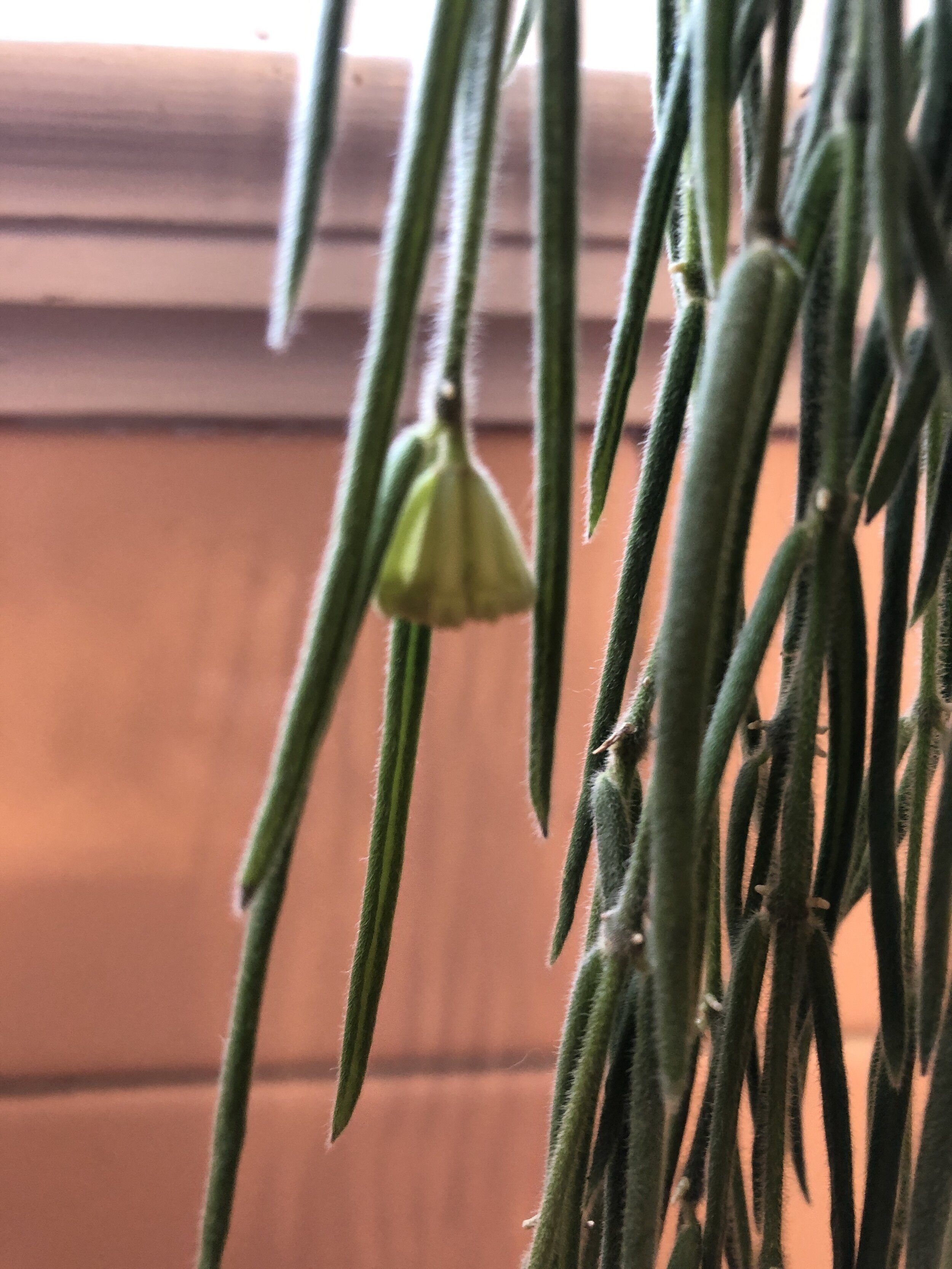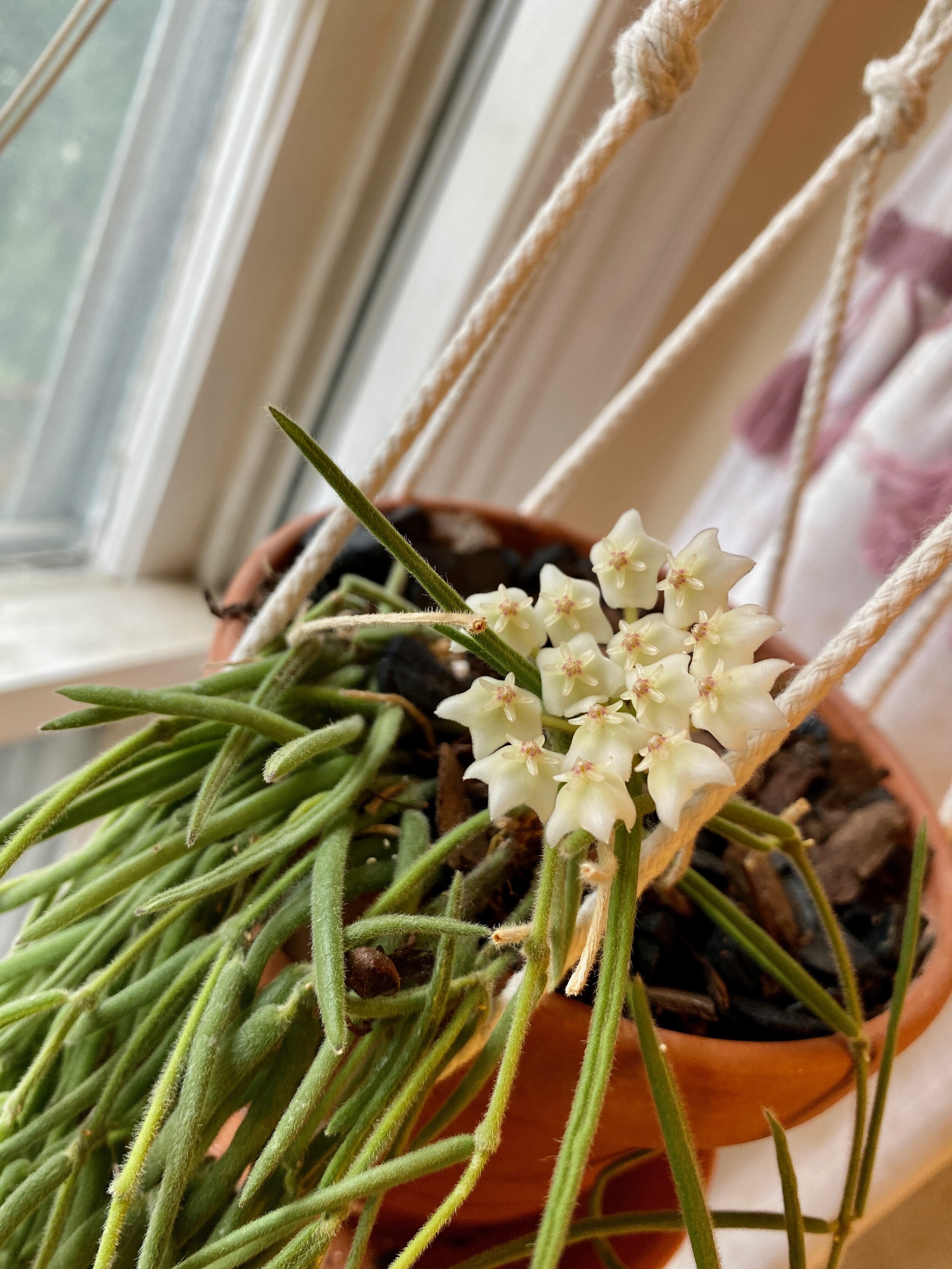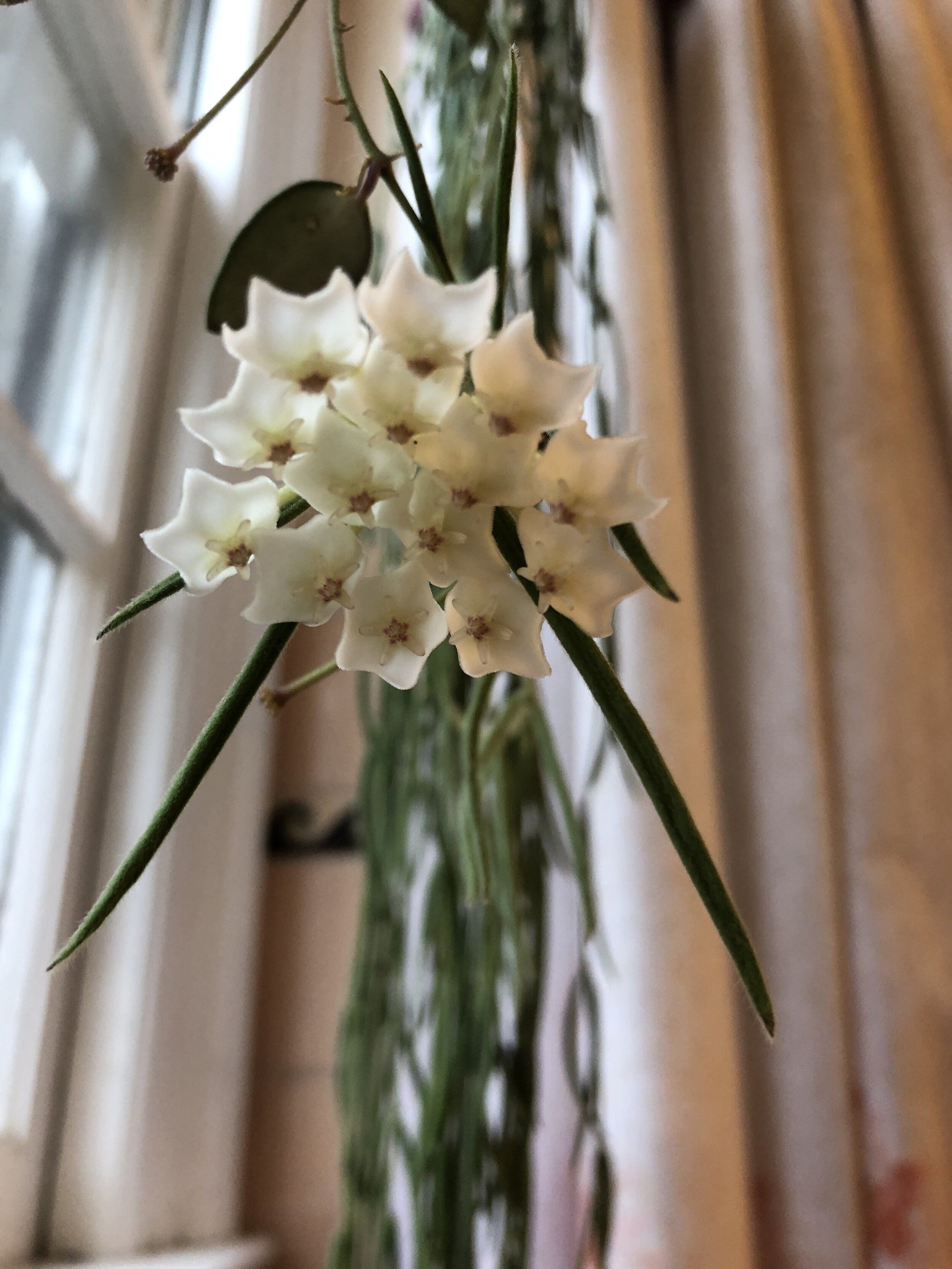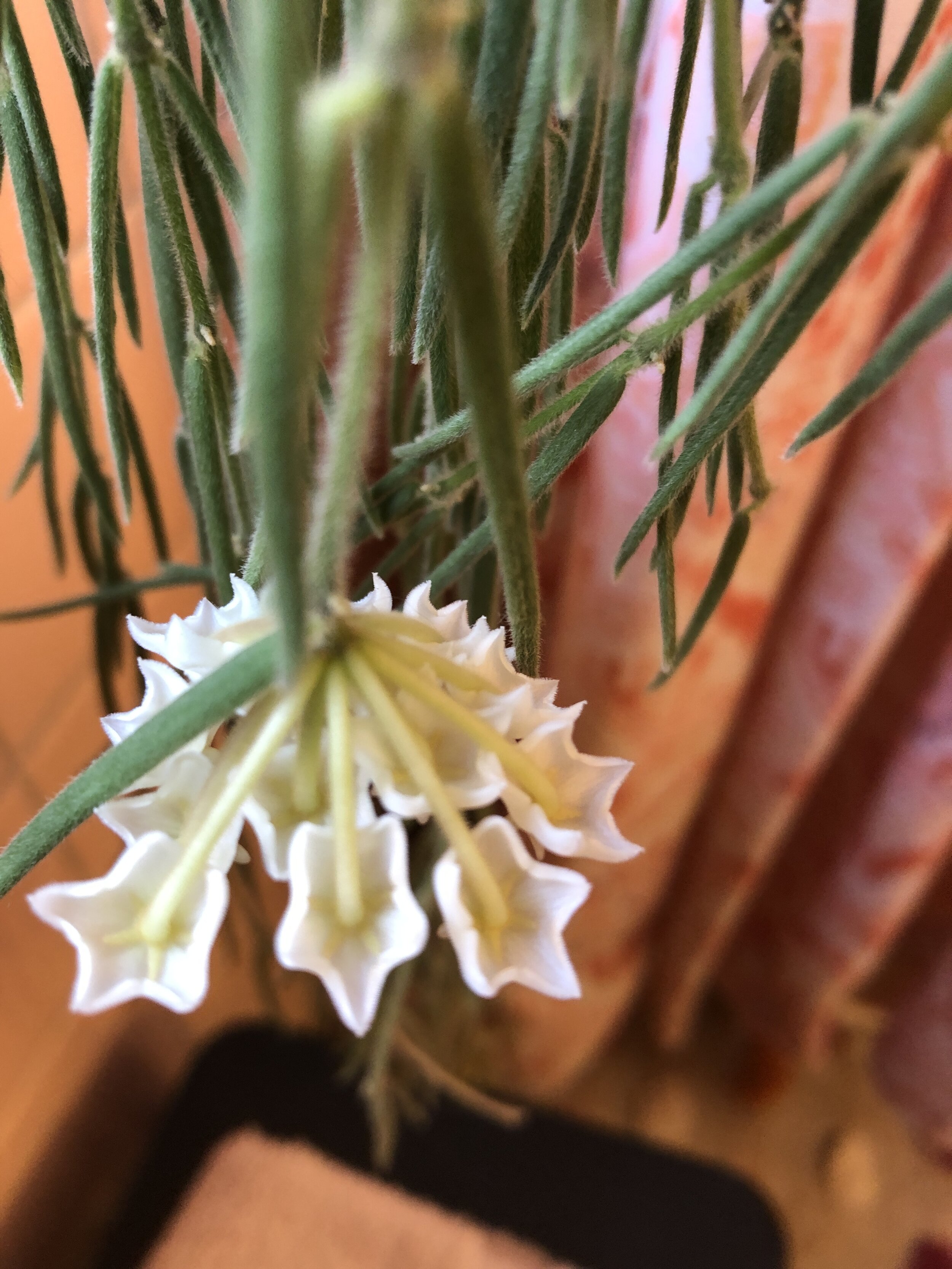Hoya Linearis: A Plant Profile
This week, my beloved Hoya linearis bloomed for the first time. Last winter, linearis developed several peduncles that made it to various stages of development before eventually dropping. Whenever I see one of my plants in bloom, it always inspires me to dig deeper into that plant and learn more about what’s working and what could be working better. Maybe I’ll never uncover the truth of what’s going on in the plant’s mind, but at least I’ll know a little bit more the next time I’m up at night wondering why my linearis dropped a peduncle.
I bought this plant as a birthday present to myself last year. I had heard many tales of how finicky this plant can be, and I justified that if I bought it as a birthday gift to myself, then I wouldn’t feel as bad if the plant crashed and burned. I’m really not sure how I figured that in my head, but somehow it all worked into a massive justification that resulted in a plant purchase. My first sign that this beauty is a little tougher than it seems was the graceful manner in which it handled shipping. My birthday is in January. I must’ve been feeling bold last year, because I had the most expensive plant I had ever purchased who happens to have a reputation for being dramatic shipped to me in the middle of winter. When I unboxed this plant, it was like the moment in a movie when the clouds part and shine down on, in this case, several feet of gorgeous Hoya linearis. The plant was shipped bare root, so I promptly potted it and began hasty research into my new favorite plant. I don’t know about you, but when I’m in the heat of a moment like I was the day my plant arrived, none of that information really sticks. It’s kind of like cramming for an exam, it’s there for a day or so and then it’s like it never entered my brain. I knew enough to hang the plant in one of my two lucky Hoya windows. These windows are big, old, and drafty. Both face west, and I have at least four Hoya in regular bloom in these windows.
After almost a year, I can tell you that this Hoya has never given me a moment of trouble. I want to share what I have learned about it for those who might have heard the same horror stories that I did before I bought my plant. It’s been a total delight for me, and I love the unexpected surprise of an easygoing plant.
Hoya linearis is native to the Himalayas. The Himalayan region, according to britannica.com, is home to four classifications of plant life - tropical, subtropical, temperate, and alpine. Hoya linearis is native to a more specific type of tropical climate - the tropical monsoon climate. Here, the temperatures are consistent year round. They range in the mid-60s or slightly higher, which is a great spot for houseplants. However, this climate is also subject to wet monsoon seasons. It’s really an exercise in futility to try to mimic a monsoon season indoors, but there are some accommodations you can make for your plant. Humidity is a big one. This plant is fuzzy (or pubescent). I love misting, but not for the purpose of humidity. I may have said this before, but I’ll say it again. Misting will never raise the relative humidity in your home. The effects are short lived, but that doesn’t mean it’s useless. I used to take my plant to the sink weekly and give it a room temperature bath, but the plant got to a size that made that unrealistic. Just for clarity: a bath does not mean that I was soaking the soil, we’re talking about vines and leaves only here. In the wild, of course the entire plant, roots and all, are getting soaked, but things are different indoors and we need to keep a close eye. More on watering later, let’s stick to humidity for now. In the case of this plant, I like misting because leaf and stem moisture are something that it’s afforded in the wild. If your plant is too large to carry to the sink for a bath, misting will work well, too. As with all things water related, make sure you lower the frequency in the cooler months.
Speaking of watering, I check the leaves for an indication of when to water this plant. They don’t wrinkle like some of the thicker leaved Hoya, but they will look wilted, slightly darker green than usual, and they won’t have a bounce back if you very gently flick the ends of the leaf. To do this, I gently take a mature leaf in two fingers close to where it meets the vine and then use my other hand to flick the leaf down. If it’s firm and bounces back tightly like a little diving board, it’s hydrated and doesn’t need more water. If the leaf is limp or floppy and shows a weak bounce, it needs water.
I used to fertilize this plant with orchid spray, but I have since changed to water soluble plant food. First, I used the orchis spray when I was giving my plant baths, so I felt confident that the product wasn’t clogging the plant’s ability to transpire. since then, I’ve since reserved the orchid spray for plants that have thick, fat leaves that are leathery in texture rather than pubescent. Think Hoya carnosa or Hoya longifolia. I have found the water soluble fertilizer to be much more effective for Hoya linearis. The plant seems more vibrant, and the peduncles it’s developed have decided to stick around.
I used a chunky potting mix for Hoya linearis. The recipe can be found here, just scroll to the section on Epiphytic potting mix. I’ve found this to be great for this plant. Since my plant came bare root, and I use a chunky mix, I am careful to watch that the weight of the plant isn’t pulling it out of the pot. It hasn’t been a problem, just something to keep an eye on.
Miscellaneous Tips:
Hoya linearis is a pendant epiphyte, which means this plant is best grown hanging. It’s habit is not to climb or vine.
Due to it’s natural climate, Hoya linearis prefers a drop in nighttime temperatures. This is why it enjoys my old windows. Be aware, this does not mean that it enjoys drafts. My windows are drafty, yes, but they have storm windows installed on the outside, so there is no movement of air, just a change in temperature.
This plant will grow very fast if it’s happy. I’ve taken accidental cuttings twice before I learned my lesson and quit removing the plant from it's hanger for watering and baths. By “accidental” I mean that I stepped on the plant and snapped some vines.
Speaking of severed vines, I propagate this plant in water to start and then I move it to potting mix. I have found that they root really nicely in water and then adapt well to the change into potting mix. I saved the accidental cuttings both times and I now have another small linearis plant.
In my conditions, this plant is a fall and winter bloomer. Unlike my Hoyas carnosa, longifolia, lacunosa and ‘Rebecca,’ my linearis blooms in the cooler months. It’s just my hypothesis, but I surmise the reason is for the natural habitat of this plant in the Himalayas.
I keep a humidifier near this plant all year long. I keep the relative humidity around 60% and it lives in a bathroom, so it gets bonus humidity when the shower or bathtub are running.
Don’t be scared.
This is one of my most favorite plants EVER, so please don’t hesitate to reach out here in the comments section, via email, or find me on Instagram and share your story with Hoya linearis! I love talking about this plant, or any plant for that matter, so let’s talk!
Are you a Hoya lover? Check out Hoya krohniana, Hoya sp. aff. burtoniae, and Hoya serpens for more fun!
Top Row L to R: September 15, September 27, September 30, October 7
Bottom Row: All October 22



